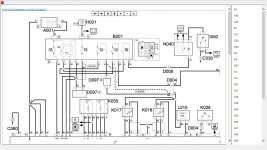kcdionysus
New member
- Joined
- Oct 4, 2013
- Messages
- 26
- Points
- 6
Hi all
I have an 05 Panda Semi Auto 1.2. It starts up immediately and idles fine but no response when I press the accelerator......the revs rise maybe to 1200-1300 rpm but that's it......barely above idle.
I have a basic OBD reader and there were a fair few codes so I erased them all and tried again and now I have 2 consistent codes - P1121 and P1122 related to Throttle Position Sensor/Potentiometer tracks 1 and 2?
I have pulled multi plugs on the TB, the ECU and accelerator pedal and given them a spray with a contact cleaner but to no avail. I have looked through the history of the car and it seems this problem has occurred before and it appears the garage replaced the accelerator pedal back in 2009.
Unfortunately, the car is away from my home so I am wondering/hoping if it is a simple case of replacing a part, I can fix it and drive it home or I may have to consider getting it recovered back home or to a garage.
I have read many topics of a similar nature but haven't seen a definite solution. The pins on the ECU multi plugs look good and not bent. I've tried some wiggling of wires but I was on my own so didn't have anyone to try the throttle at the time to see if anything changed. I've pressed the butterfly open and the revs started to rise but coughed as I suspect too much air being allowed in and no increase in fuel?
Any ideas or advice would be helpful.
I have an 05 Panda Semi Auto 1.2. It starts up immediately and idles fine but no response when I press the accelerator......the revs rise maybe to 1200-1300 rpm but that's it......barely above idle.
I have a basic OBD reader and there were a fair few codes so I erased them all and tried again and now I have 2 consistent codes - P1121 and P1122 related to Throttle Position Sensor/Potentiometer tracks 1 and 2?
I have pulled multi plugs on the TB, the ECU and accelerator pedal and given them a spray with a contact cleaner but to no avail. I have looked through the history of the car and it seems this problem has occurred before and it appears the garage replaced the accelerator pedal back in 2009.
Unfortunately, the car is away from my home so I am wondering/hoping if it is a simple case of replacing a part, I can fix it and drive it home or I may have to consider getting it recovered back home or to a garage.
I have read many topics of a similar nature but haven't seen a definite solution. The pins on the ECU multi plugs look good and not bent. I've tried some wiggling of wires but I was on my own so didn't have anyone to try the throttle at the time to see if anything changed. I've pressed the butterfly open and the revs started to rise but coughed as I suspect too much air being allowed in and no increase in fuel?
Any ideas or advice would be helpful.



